
How to Use USB male 2 pin connection: Examples, Pinouts, and Specs
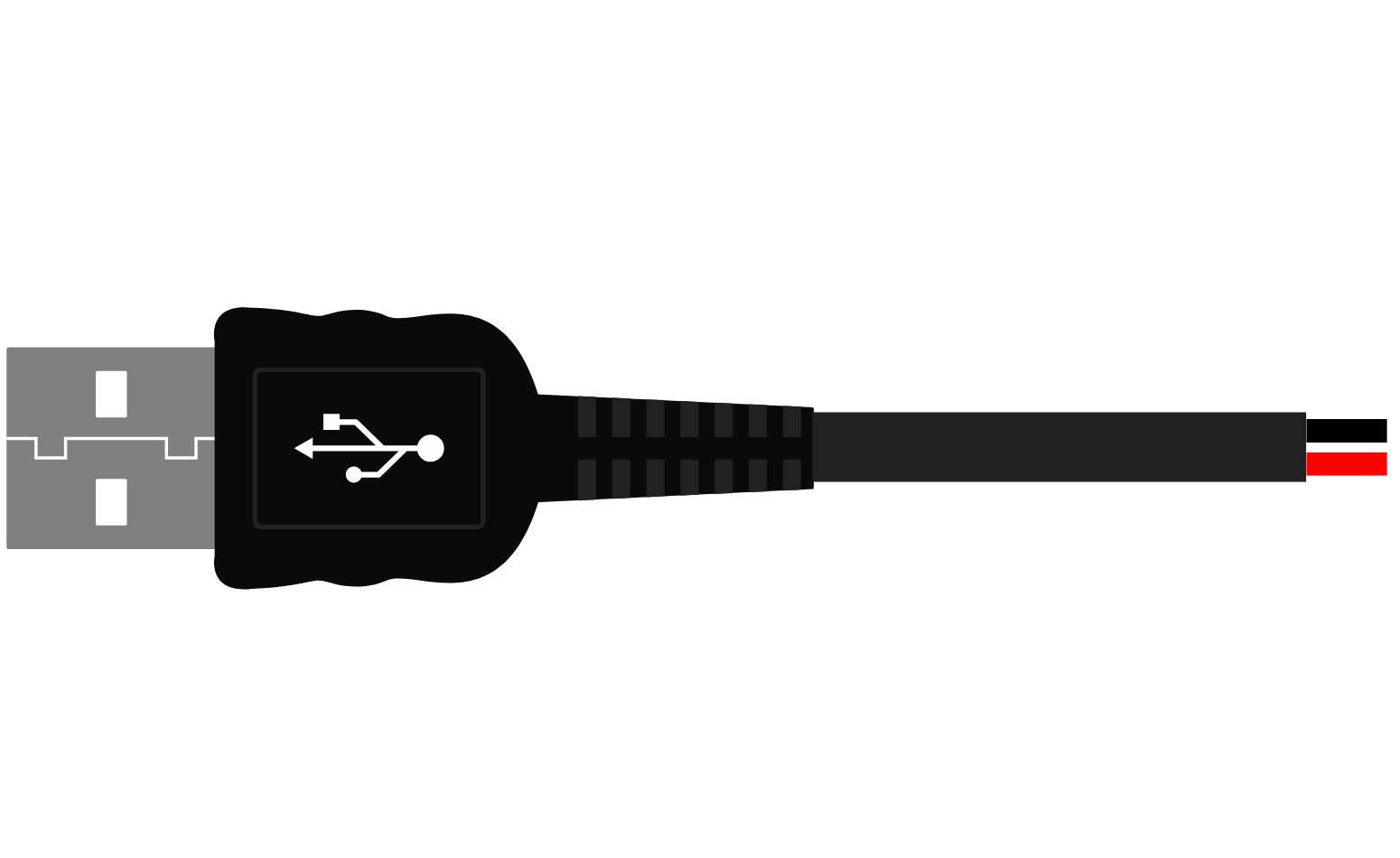
 Design with USB male 2 pin connection in Cirkit Designer
Design with USB male 2 pin connection in Cirkit DesignerIntroduction
The USB Male 2-Pin Connection is a simplified version of the standard USB connector, designed primarily for power supply purposes. It consists of two pins: VBUS (power) and GND (ground), omitting the data transfer lines found in full-featured USB connectors. This connector is commonly used in applications where only power delivery is required, such as charging batteries, powering small electronics, or as a power input for development boards like the Arduino UNO.
Explore Projects Built with USB male 2 pin connection
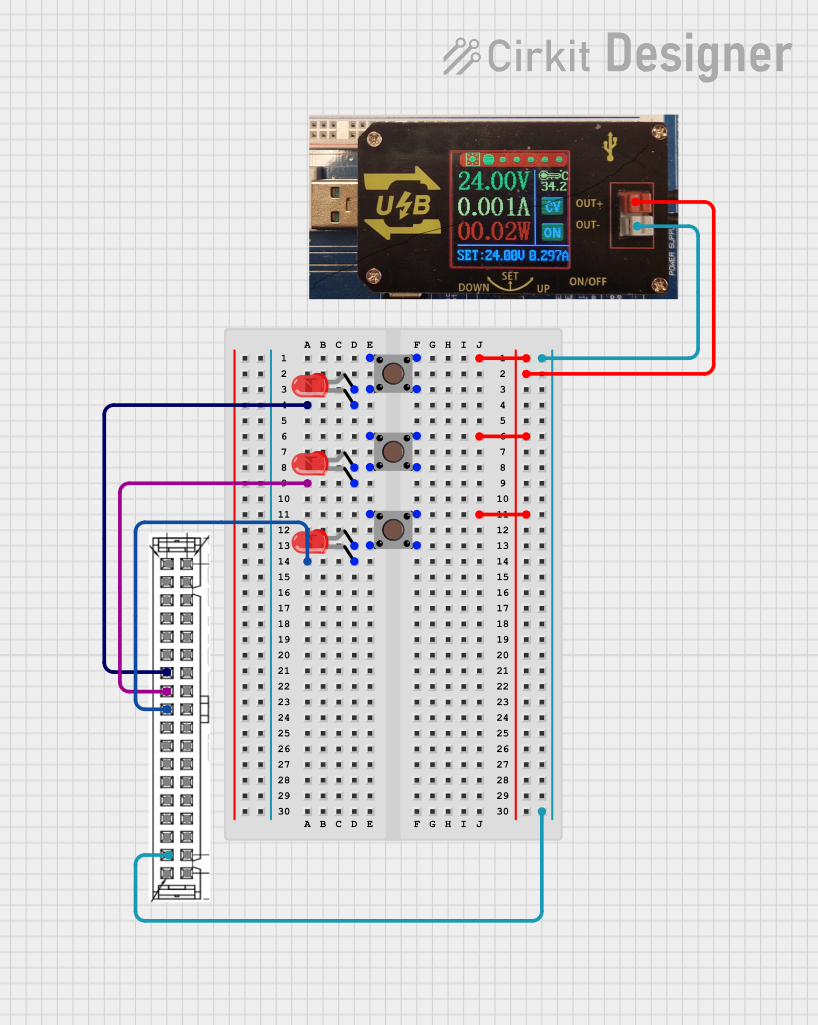
 Open Project in Cirkit Designer
Open Project in Cirkit Designer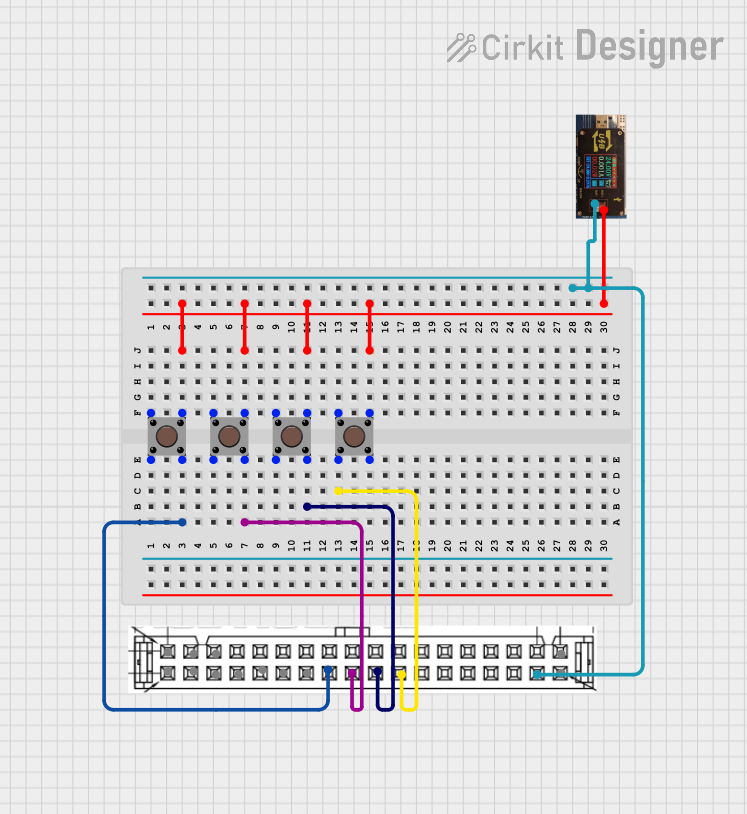
 Open Project in Cirkit Designer
Open Project in Cirkit Designer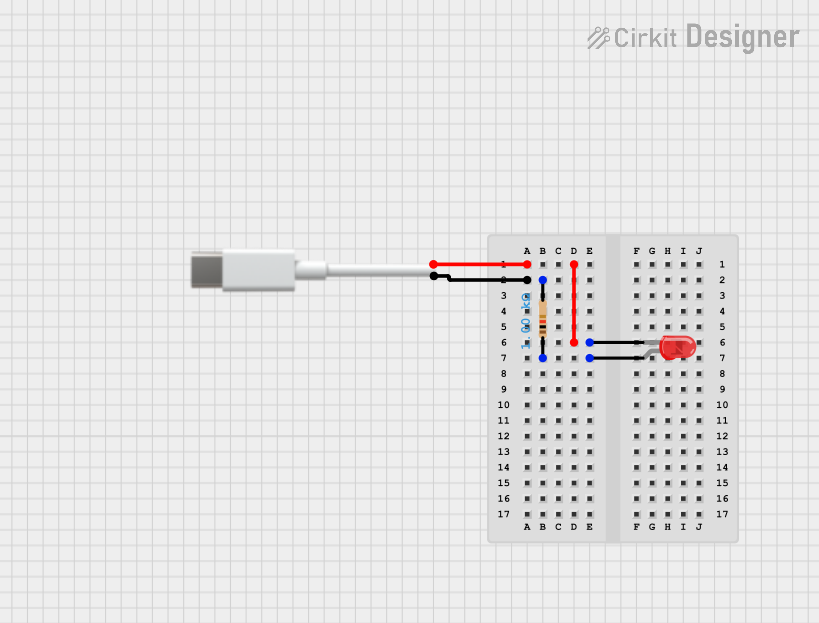
 Open Project in Cirkit Designer
Open Project in Cirkit Designer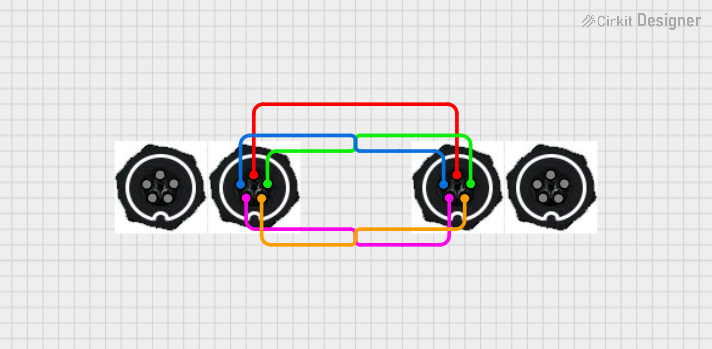
 Open Project in Cirkit Designer
Open Project in Cirkit DesignerExplore Projects Built with USB male 2 pin connection

 Open Project in Cirkit Designer
Open Project in Cirkit Designer
 Open Project in Cirkit Designer
Open Project in Cirkit Designer
 Open Project in Cirkit Designer
Open Project in Cirkit Designer
 Open Project in Cirkit Designer
Open Project in Cirkit DesignerTechnical Specifications
Key Technical Details
- Voltage Rating: 5V (standard USB power supply)
- Current Rating: Up to 1A (depending on cable gauge and quality)
- Connector Type: USB Type-A Male
- Durability: Typically rated for 1,500 insertion/removal cycles
Pin Configuration and Descriptions
| Pin Number | Name | Description |
|---|---|---|
| 1 | VBUS | +5V power supply |
| 2 | GND | Ground connection |
Usage Instructions
Integration into a Circuit
To use the USB Male 2-Pin Connection in a circuit:
- Identify the VBUS and GND pins using the pin configuration table above.
- Connect the VBUS pin to the positive terminal of your device's power input.
- Connect the GND pin to the ground terminal of your device's power input.
- Ensure proper insulation of the connections to prevent short circuits.
Important Considerations and Best Practices
- Voltage Regulation: If your device requires a regulated voltage different from 5V, use a voltage regulator.
- Current Limitation: Do not exceed the current rating of the connector; consider the maximum current your USB power source can provide.
- Cable Quality: Use a cable with an adequate gauge for the current you intend to draw.
- Short Circuit Protection: Implement fuses or current-limiting resistors to protect against shorts.
Troubleshooting and FAQs
Common Issues
- Device Not Powering On: Check the polarity of the connections and ensure the power source is functional.
- Intermittent Power: Inspect the connector for physical damage or loose connections.
Solutions and Tips
- Secure Connections: Use soldering for a more reliable connection than twist-and-tape methods.
- Power Source Check: Verify that the USB power source can supply the required current.
- Cable Inspection: Look for any signs of wear or damage on the cable that could affect performance.
FAQs
Q: Can I use this connector for data transfer? A: No, the USB Male 2-Pin Connection is designed only for power supply, not for data transfer.
Q: Is it safe to use any USB power adapter? A: Yes, as long as the adapter outputs 5V and does not exceed the current rating of the connector.
Q: How can I prevent the USB connector from wearing out quickly? A: Minimize the number of insertion/removal cycles and handle the connector with care.
Example Code for Arduino UNO
// This example demonstrates how to power an Arduino UNO using a USB Male 2-Pin Connection.
void setup() {
// Initialize digital pin LED_BUILTIN as an output.
pinMode(LED_BUILTIN, OUTPUT);
}
void loop() {
// Turn the LED on (HIGH is the voltage level)
digitalWrite(LED_BUILTIN, HIGH);
// Wait for a second
delay(1000);
// Turn the LED off by making the voltage LOW
digitalWrite(LED_BUILTIN, LOW);
// Wait for a second
delay(1000);
}
// Note: This code assumes that the Arduino is powered using the USB Male 2-Pin
// Connection connected to the 5V and GND pins on the power header.
Remember, the above code is for demonstration purposes only. When using a USB Male 2-Pin Connection with an Arduino UNO, ensure that the power requirements of the board and any connected peripherals do not exceed the current capabilities of the USB connection.